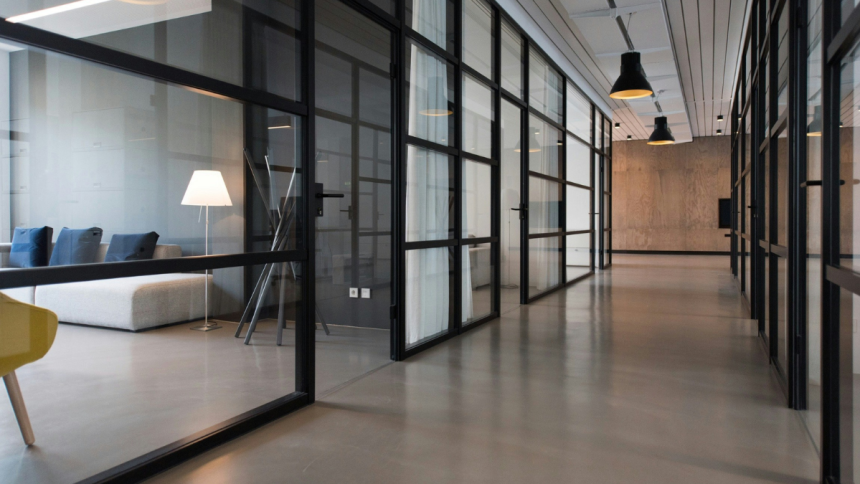Large-scale commercial renovations require meticulous planning, significant investment, and strategic execution to ensure the project achieves its intended goals. Whether renovating an office building, retail space, or industrial facility, the process involves multiple phases, each with its own challenges. Properly managing these aspects is essential for minimizing disruptions, staying within budget, and maximizing the long-term value of the renovated property.
From structural integrity to energy efficiency, every detail must be considered to create a modernized space that meets regulatory requirements and enhances functionality. Addressing key elements such as roofing, interior layout, infrastructure, and sustainability will contribute to a successful renovation. Below are the critical factors to keep in mind when undertaking a large-scale commercial renovation.
Structural Integrity and Compliance
Before undertaking a large-scale commercial renovation, a thorough assessment of the building’s structural integrity is necessary. This involves evaluating the foundation, load-bearing walls, and support beams to determine whether they can handle the proposed changes. Older buildings may require reinforcements to meet modern safety and regulatory standards.
Compliance with building codes and zoning regulations is another crucial factor. Depending on the scope of the renovation, certain permits may be required before construction begins. Failure to comply with regulations can lead to costly fines or project delays. Engaging structural engineers and architects early in the planning process ensures that all modifications align with safety standards and legal requirements.
Protecting Your Investment with a Strong Roofing System
One of the most important yet often overlooked aspects of a commercial renovation is the roof. A well-structured roofing system does more than provide shelter; it plays a crucial role in energy efficiency, structural integrity, and long-term maintenance costs.
Commercial roofing goes beyond simply keeping out the rain; it protects your investment, improves building efficiency, and addresses the unique requirements of your property. Depending on the size and purpose of the building, factors such as insulation, drainage, and durability must be taken into account.
Upgrading the roofing system during renovation can significantly impact overall operational costs. Energy-efficient roofing materials, such as reflective coatings or green roofing solutions, help regulate indoor temperatures, reducing the load on HVAC systems.
Additionally, ensuring proper drainage and waterproofing can prevent costly water damage and extend the lifespan of the structure. When planning a renovation, working with experienced professionals to evaluate the existing roof condition and determine the best upgrades will prevent potential future issues and ensure long-term benefits.
Interior Layout and Space Utilization
Optimizing interior space is essential for maximizing efficiency and functionality. A well-planned layout can improve workflow, enhance customer experience, and create a more comfortable environment for occupants. During the renovation process, it is important to assess how the space will be used and whether current designs meet the needs of tenants, employees, or customers.
Flexible layouts that allow for future modifications provide long-term value. Open floor plans, modular workspaces, and multi-purpose areas make it easier to adapt the space to evolving business needs. Incorporating modern design elements, such as improved lighting, soundproofing, and ergonomic features, can further enhance the overall experience within the facility.
Energy Efficiency and Sustainability
Sustainability is a major consideration in commercial renovations. Energy-efficient buildings not only reduce operating costs but also align with environmental goals and regulations. Incorporating green building materials, efficient HVAC systems, and smart lighting solutions can significantly lower energy consumption.
Solar panels, energy-efficient windows, and improved insulation contribute to long-term savings by reducing dependence on external energy sources. Additionally, integrating water-saving fixtures and recycling programs can further enhance the building’s sustainability. Businesses that prioritize eco-friendly renovations may also qualify for tax incentives and certifications that recognize environmental responsibility.
HVAC and Ventilation Systems
Proper heating, ventilation, and air conditioning (HVAC) systems are essential for maintaining indoor air quality and ensuring occupant comfort. Aging HVAC systems can be inefficient, costly to maintain, and unable to meet modern energy standards. Upgrading to advanced climate control systems during a renovation can lead to improved air circulation, lower energy bills, and better temperature regulation.
When selecting an HVAC system, factors such as building size, occupancy levels, and regional climate must be considered. Smart HVAC technology allows for automated temperature adjustments based on real-time occupancy, reducing unnecessary energy consumption. Routine maintenance schedules should also be established to prevent system failures and prolong the lifespan of the equipment.
Electrical and Plumbing Upgrades
Outdated electrical and plumbing systems can present safety hazards and inefficiencies. Renovations provide an opportunity to upgrade these systems to meet modern standards. Ensuring adequate power distribution, installing energy-efficient fixtures, and replacing aging pipes can prevent issues such as power surges, water leaks, or insufficient electrical capacity.
Electrical upgrades should support the increasing demand for technology, including enhanced wiring for data centers, security systems, and automation features. Additionally, plumbing renovations should incorporate water-efficient fixtures and filtration systems to promote sustainability and reduce utility costs.
Safety and Security Enhancements
Security is a critical factor in commercial renovations, especially for buildings that experience high foot traffic. Installing advanced security measures, such as surveillance cameras, access control systems, and alarm monitoring, helps protect occupants and assets. Fire safety upgrades, including sprinkler systems, smoke detectors, and emergency exits, should also be assessed during the renovation process.
Budgeting and Cost Control
Large-scale renovations require detailed budgeting to prevent unexpected costs. Establishing a clear financial plan that accounts for material expenses, labor, permits, and contingency funds helps maintain financial stability throughout the project. Unforeseen issues such as structural damage or supply chain delays can increase costs, making it essential to allocate additional funds for potential setbacks.
Project Management and Timeline Efficiency
Efficient project management is key to minimizing downtime and ensuring timely completion. A well-coordinated approach that includes scheduling, resource allocation, and communication among stakeholders helps streamline the renovation process. Delays can result in financial losses and operational disruptions, making it essential to set realistic timelines and closely monitor progress.
Future-Proofing the Renovation
A well-executed renovation should stand the test of time. Future-proofing involves considering long-term usability, technological advancements, and evolving industry trends. Implementing smart building technologies, flexible layouts, and sustainable materials ensures that the building remains functional and valuable for years to come.
All in all,large-scale commercial renovations demand careful planning, strategic decision-making, and a focus on long-term benefits. Addressing key factors such as roofing, structural integrity, energy efficiency, safety, and project management ensures a successful outcome. By prioritizing modern upgrades and sustainability, businesses can create a more efficient, secure, and adaptable space that meets both current and future needs.
Lynn Martelli is an editor at Readability. She received her MFA in Creative Writing from Antioch University and has worked as an editor for over 10 years. Lynn has edited a wide variety of books, including fiction, non-fiction, memoirs, and more. In her free time, Lynn enjoys reading, writing, and spending time with her family and friends.















